VKPS: program of PS graphics
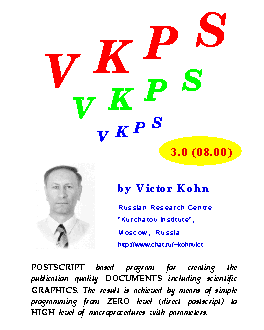 For many years I am using the own graphical programs for a
presentation of the results of my calculation. Recent time I am
working with FORTRAN Power Station 4.0 (Windows-95 and later).
Using FORTRAN I have elaborated a very general program of
scientific graphics which may be of interest for many people.
It uses some new language for a description of input data
and prepares the graphics as a postscript document.
The language is well described by a special postscript document
prepared just with the program itself. It is called VKPS (Victor
Kohn PostScript). In August 2000 i have created a version 3.0 of
the program which becomes more convenient and powerful as compared
to the preceding versions. Then some improvement were done in addition.
The program was tested for PC (Windows 95, NT, 2000).
However, with small modifications it may be used in any operating
system which has a FORTRAN compiler (UNIX, for example). Below
the section "Introduction" of the VKPS description is presented with
some pictures from the description.
For many years I am using the own graphical programs for a
presentation of the results of my calculation. Recent time I am
working with FORTRAN Power Station 4.0 (Windows-95 and later).
Using FORTRAN I have elaborated a very general program of
scientific graphics which may be of interest for many people.
It uses some new language for a description of input data
and prepares the graphics as a postscript document.
The language is well described by a special postscript document
prepared just with the program itself. It is called VKPS (Victor
Kohn PostScript). In August 2000 i have created a version 3.0 of
the program which becomes more convenient and powerful as compared
to the preceding versions. Then some improvement were done in addition.
The program was tested for PC (Windows 95, NT, 2000).
However, with small modifications it may be used in any operating
system which has a FORTRAN compiler (UNIX, for example). Below
the section "Introduction" of the VKPS description is presented with
some pictures from the description.
Introduction. -- The program VKPS allows one to prepare quickly the results of scientific calculation or any combination of graphical objects as a multipage document written in PostScript language (PSL). The following treatment of the document may be done by standard technique like printing on the postscript printers or looking by the program GhostView.
 As known PSL has been elaborated for a presentation of all printed
information like pictures, texts, figures, tables, formulas and so
on. It is just the input stream of any network printer. PSL is
able to describe the whole book with a lot of pages. On the other hand,
it is universal and easy to read and to transfer by e-mail as a
usual ASCII file.
As known PSL has been elaborated for a presentation of all printed
information like pictures, texts, figures, tables, formulas and so
on. It is just the input stream of any network printer. PSL is
able to describe the whole book with a lot of pages. On the other hand,
it is universal and easy to read and to transfer by e-mail as a
usual ASCII file.
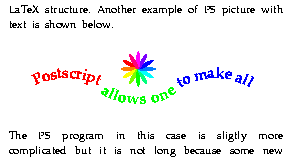 In principle, PSL is one of the many programming languages. It is
possible to write the "xxx.ps" document directly by means of any simple
text editor. However, it is inconvenient in many cases, especially
when a picture is the scientific figure which shows a lot of values of
some function of two variables. The inconvenience is due to the fact
that PSL is a low-level programming language. To describe the figure
on PSL one needs to determine all details of the figure because each step
of postscript interpretator makes only a small work while the number
of primitive instructions may be as large as thousands for a complex
figure in the case when the calculated lines are formed by thousands
points.
In principle, PSL is one of the many programming languages. It is
possible to write the "xxx.ps" document directly by means of any simple
text editor. However, it is inconvenient in many cases, especially
when a picture is the scientific figure which shows a lot of values of
some function of two variables. The inconvenience is due to the fact
that PSL is a low-level programming language. To describe the figure
on PSL one needs to determine all details of the figure because each step
of postscript interpretator makes only a small work while the number
of primitive instructions may be as large as thousands for a complex
figure in the case when the calculated lines are formed by thousands
points.
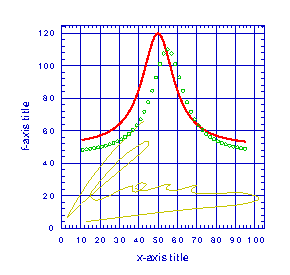 The second problem of such a way is a necessity to work with a very large
file containing a lot of figures and texts. When some new fragment is
wrong it is difficult to search the error and to verify the file many times.
The second problem of such a way is a necessity to work with a very large
file containing a lot of figures and texts. When some new fragment is
wrong it is difficult to search the error and to verify the file many times.
That is why, instead of direct programming the pictures on PSL some users prefer to have the graphical program which allows to work inside the interactive (WYSIWYG) environment when the user may see the result of his actions immediately in a graphical form. This method has advantages in the case of drawed pictures of random structure. However, it is limited in the case of regular pictures of computed graphics or rather complicated figures contisting of many fragments.
 On the other hand, some simple graphical objects like lines, frames, arcs,
simple text strings may be described in a simple and direct way.
That is why some additional high-level languages were created which are
simpler for the beginners and are supported also by the instrumentality
to show quickly the picture described. At the final stage when the text
of program becomes correct, the original description is translated from
the high-level language to Postscript. As an example, of this approach
the package GLE (Graphics Line Editor) may be pointed out. This package
is free in Internet. Another example is the program METAPOST which is a
part of the package MiKTeX. However, this way is also limited because
the user which has learned the high-level language has no motive to use
the all possibilities of PSL. In addition, the package GLE, for example,
produces the Postscript document (file) of much larger size compared to
the size which may be obtained by specialist in the case of direct
programming on PSL the scientific figures containing a lot of points.
This becomes inconvenient when it is necessary to transfer the file by
e-mail or FTP.
On the other hand, some simple graphical objects like lines, frames, arcs,
simple text strings may be described in a simple and direct way.
That is why some additional high-level languages were created which are
simpler for the beginners and are supported also by the instrumentality
to show quickly the picture described. At the final stage when the text
of program becomes correct, the original description is translated from
the high-level language to Postscript. As an example, of this approach
the package GLE (Graphics Line Editor) may be pointed out. This package
is free in Internet. Another example is the program METAPOST which is a
part of the package MiKTeX. However, this way is also limited because
the user which has learned the high-level language has no motive to use
the all possibilities of PSL. In addition, the package GLE, for example,
produces the Postscript document (file) of much larger size compared to
the size which may be obtained by specialist in the case of direct
programming on PSL the scientific figures containing a lot of points.
This becomes inconvenient when it is necessary to transfer the file by
e-mail or FTP.
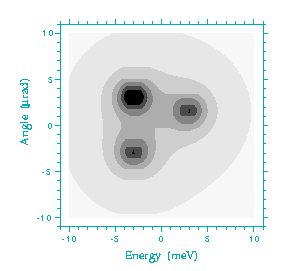 I think that the high-level language has to be based directly on
PSL in the places where it is convenient. From this point of view it
has to contain the possibility to include any piece of ready postscript
text in the file of high-level program. Since the Postscript on the whole
is very complicated it is difficult to create an independent interpretator
of such a language which may work faster and better that GhostView.
Therefore the procedure of simple debugging is not possible and it is of
interest to realize only the function of translating the high-level
language to PSL. In other words, this high-level language must be a set
of macro procedures.
I think that the high-level language has to be based directly on
PSL in the places where it is convenient. From this point of view it
has to contain the possibility to include any piece of ready postscript
text in the file of high-level program. Since the Postscript on the whole
is very complicated it is difficult to create an independent interpretator
of such a language which may work faster and better that GhostView.
Therefore the procedure of simple debugging is not possible and it is of
interest to realize only the function of translating the high-level
language to PSL. In other words, this high-level language must be a set
of macro procedures.
These procedures, in principle, may be written directly in PSL where it is desirable together with the compiled procedures. In any case the task is to transform some simple and short text to PSL text which must be also as short as possible. The short text of high-level language allows to avoid errors and save the work of users. The short text of resulting postscript file is convenient for a trasfer by FTP (Internet) to colleagues from other countries.
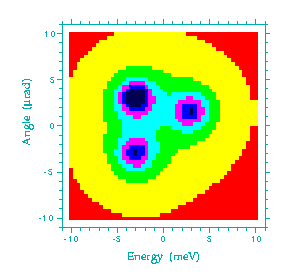 Such a way may be beneficial for men who work on computer and know the
programming languages to create his own calculating programs and to obtain
by means of this programs very fresh results which must be considered from
different sides. This work demands a lot of graphics of different kinds.
Each step deals with one figure but these figures must be accumulated for
a further analysis. Sometimes it is necessary to prepare a lecture or a
poster to the conference. Another application is to prepare the figures
for scientific papers. As it is known, a text of scientific paper may be
prepared by means of LaTeX language with more convenience. However, it is
not a case for figures. On the other hand, something similar to LaTeX is
also accumulated in the new language.
Such a way may be beneficial for men who work on computer and know the
programming languages to create his own calculating programs and to obtain
by means of this programs very fresh results which must be considered from
different sides. This work demands a lot of graphics of different kinds.
Each step deals with one figure but these figures must be accumulated for
a further analysis. Sometimes it is necessary to prepare a lecture or a
poster to the conference. Another application is to prepare the figures
for scientific papers. As it is known, a text of scientific paper may be
prepared by means of LaTeX language with more convenience. However, it is
not a case for figures. On the other hand, something similar to LaTeX is
also accumulated in the new language.
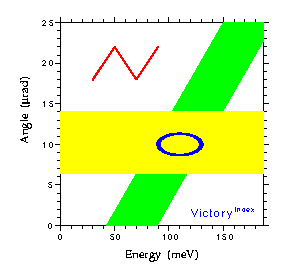 This way supposes the knowledge of the Postscript language at least
partially. Nevertheless all routine work is performed automatically
by computer. I see two great problems. The first one is to make the total
big Postcript file of many pages from the ready fragments. The second one
is to describe the separate fragments which may have different nature.
The language of the program VKPS just solves both these problems. It
involves the direct postscript operators only for describing the simple
fragments therefore it is not necessary to know the language on a whole.
It is enough to know only the structure of some simple operators.
The initial information about the PSL is also included in this document as
an appendix.
This way supposes the knowledge of the Postscript language at least
partially. Nevertheless all routine work is performed automatically
by computer. I see two great problems. The first one is to make the total
big Postcript file of many pages from the ready fragments. The second one
is to describe the separate fragments which may have different nature.
The language of the program VKPS just solves both these problems. It
involves the direct postscript operators only for describing the simple
fragments therefore it is not necessary to know the language on a whole.
It is enough to know only the structure of some simple operators.
The initial information about the PSL is also included in this document as
an appendix.
For PC-users a ready program with all necessary files including the description of the language as ZIP-archive can be downloaded from this site. UNIX-users may obtain the FORTRAN code instead of the program itself. The program may be used after compilinig the code.
written in September 2000, last modified in July 2003
Close the windows if you don't like to keep it.
.